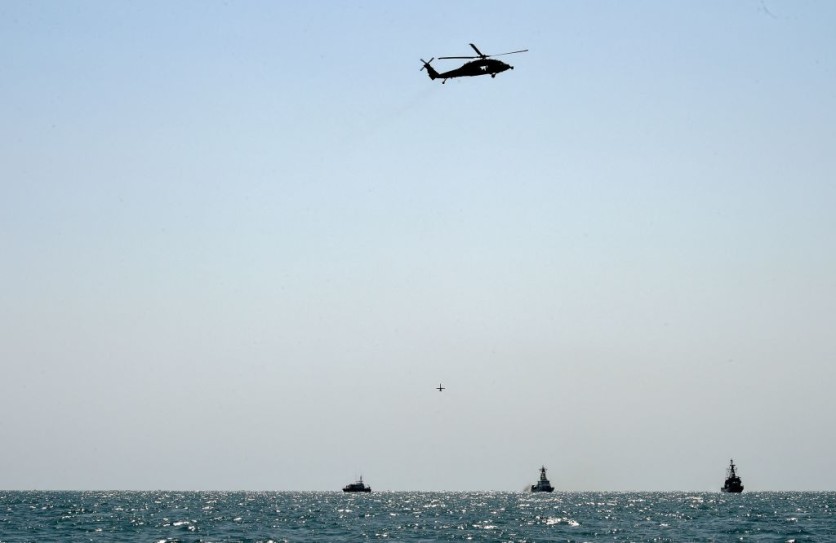A groundbreaking Pentagon initiative to create networks of air, surface, and underwater drones for patrolling vast areas while integrating their surveillance with artificial intelligence was brought to light by Iran's recent seizure of unmanned US Navy vessels, according to a report by AFP.

Unmanned Surface Vessels
The one-year-old initiative employs a large number of unmanned surface vessels (USVs) to collect data and photographs in the waters of the Arabian Peninsula before beaming them back to processing facilities in the Gulf.
The program functioned smoothly until two events on Aug. 29-30 and Sept. 1, when Iranian soldiers attempted to seize three seven-meter Saildrone Explorer USVs.
In the first incident, a US Navy Patrol boat and helicopter quickly responded to the scene when an Iranian ship from the Islamic Revolutionary Guard Corps attached a line to a Saildrone in the Gulf and started dragging it away.
An Iranian destroyer captured two Saildrones in the second incident in the Red Sea and hoisted them aboard.
The Iranians were eventually convinced to surrender the following day after two US Navy destroyers and helicopters swiftly landed, but only after removing their cameras, according to the US military.
The USVs were seized to avert possible accidents, according to the Iranians, who claimed they were in international shipping channels. The US Navy claimed that the USVs were unarmed and operating outside of commerce routes.
The head of the US Naval Forces Central Command, Vice Admiral Brad Cooper, described the Iranian actions as "flagrant, unwarranted, and inconsistent with the behavior of a professional maritime force."
Sea Drones and AI
To incorporate unmanned systems and artificial intelligence into operations in the Middle East, the US 5th Fleet's Task Force 59, stationed in Bahrain, was established last year.
Unmanned surface boats are considerably more recent and crucial for the future than airborne and underwater drones, according to Commander Tim Hawkins, spokesman for the Fifth Fleet, who spoke to AFP.
The US Navy and regional allies have been deploying both sluggish USVs like Saildrones and battery-powered speedboats like the Mantas T-12 since last year.
The Saildrones have solar panels and sail wings and may spend up to a year at sea while relaying data by satellite, and carry numerous sensors and cameras.
This article is owned by Tech Times
Written by Joaquin Victor Tacla
ⓒ 2025 TECHTIMES.com All rights reserved. Do not reproduce without permission.




